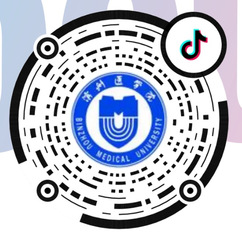The Microbial Metabolic Engineering and Efficient Utilization Team (Prof. Gao Zhengquan’s team) of School of Pharmacy (Wine School) has recently published a paper titled Synergistic Degradation of Azure B and Sulfanilamide Antibiotics by the White-rot Fungus Trametes Versicolor with an Activated Ligninolytic Enzyme System in the Journal of Hazardous Materials (IF 13.6), a top journal of environmental sciences and ecology, with Binzhou Medical University the first signature unit and the sole unit of corresponding authors. Associate Prof. Zhang Hao, a doctor introduced in 2021, and two postgraduate students Liu Xiang and Liu Baoming from School of Pharmacy (Wine School) were co-first authors, and Prof. Gao Zhengquan and Prof. Meng Chunxiao were the corresponding authors of the paper.
In recent years, with the vigorous development of China’s pharmaceutical industry, a large number of pharmaceutical companies have sprung up. It definitely contributes to the construction of Healthy China, but also causes the problem of compound wastewater pollution containing many kinds of toxic pharmaceutical intermediates, which is harmful to people’s health and ecological environment. The difficulties in the treatment of pharmaceutical wastewater lie in its complex composition, high concentration of toxic and harmful pollutants, high chroma and degradation-resistance. The conventional physico-chemical treatment methods have the disadvantages of high cost, low efficiency, low broad-spectrum and easy to cause secondary pollution. Therefore, it is imperative to explore efficient, green and economic biological treatment of pharmaceutical wastewater.
Taking this as an entry point, this study aims to establish an efficient biological treatment method for pharmaceutical wastewater that is different from the traditional physico-chemical treatment. The team selects white-rot fungus, which can degrade organic pollution by broad spectrum, as the research object through massive screening. The results show that the degradation effect of white-rot fungus on Azure B and sulfanilamide antibiotics composite pollution system is significantly better than that of single pollutant system. This achievement not only complements the theory and mechanism of biological treatment of toxic pollutants, but also enriches the system of pollution treatment, and provides new perspectives for exploring the efficient treatment of pharmaceutical wastewater. Currently, the study focuses on optimizing and scaling-up the subsequent process, with a view to providing new options for the development of the industry.
This study has been supported by the National Natural Science Foundation of China, the Major Basic Project of Shandong Natural Science Foundation, the Shandong Natural Science Foundation, the Yantai Development Zone and Science and Technology Leadership Program, and the Start-up Fund of Binzhou Medical University.
Original Link:https://doi.org/10.1016/j.jhazmat.2023.131939
BY: Zhang Hao
SOURCE: School of Pharmacy(Wine School)





